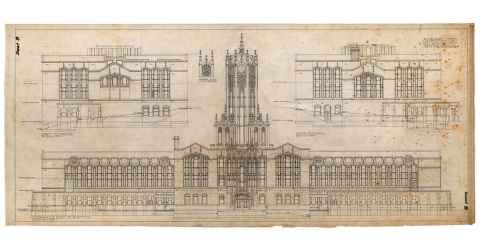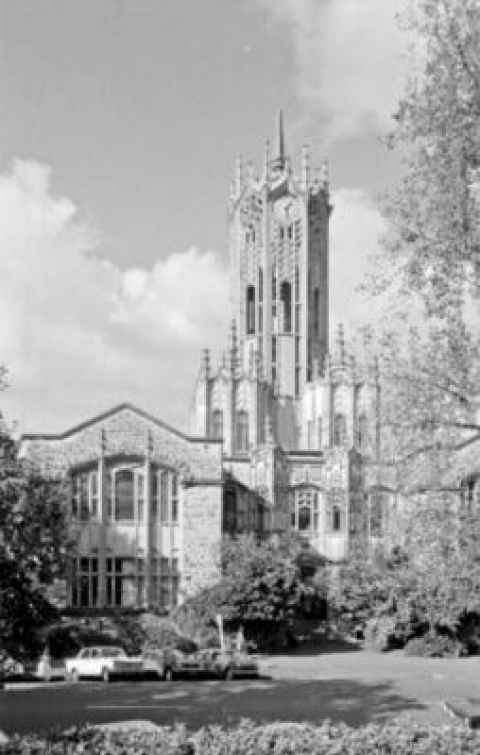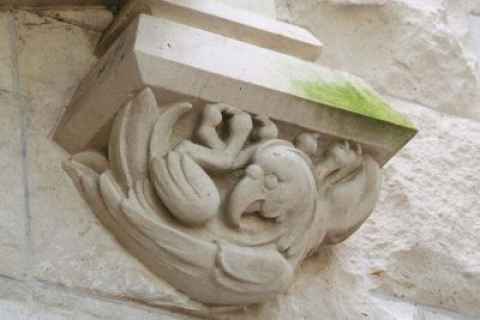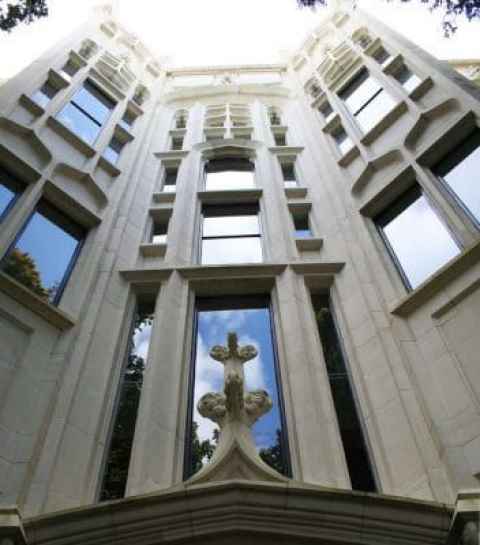ClockTower design: celebrating 100 years
24 September 2021

A century ago, Roy Lippincott and Edward Billson won the competition to design the University’s first significant purpose-built building, now known as the ClockTower. The competition to design a building to accommodate Arts, Architecture, Law, Music and the Library attracted 44 entries. These were whittled down to six semi-finalists before the Melbourne-based architects were named as winners in July 1921.
Lippincott (1885-1969), along with his family, moved to Auckland to oversee construction and complete the project; Billson remained in Australia. A Chicago-trained American architect, Lippincott and his wife had moved to Australia in 1914 with Walter Burley Griffin and Marion Mahoney Griffin after the Griffins won the competition to design Australia’s federal capital, Canberra.

Criticism and values
Admiration for the ClockTower design was not universal, despite its competition success. The central tower was criticised for being too ornate and the buttresses at either end too plain. Lippincott explained that the idea had been “to work up to the tower as the culminating feature, symbolic of the spiritual aspect of university ideals”.1
More surprisingly it was castigated for being “un-British and out of harmony with our national character”. Lippincott defended their design saying, “if we turn to Nature as we find her in this fascinating land…we shall produce a building and a tower —not British, surely, but one that shall belong much more intimately to us here in Auckland…and by the same token would be of much greater and more lasting interest to New Zealander and visitor alike”.2 This philosophy was partly expressed in the use of New Zealand native flora and fauna in the building’s decorative elements.


Campus as a botanical garden
Lippincott also embraced this ideology in designing the grounds around the ClockTower, which featured many native plants, such as manuka and kowhai. This was integral to his overall vision and contributed to the idea of the University becoming “a small botanical garden”.3 It must have been a striking contrast with the mainly introduced species found in nearby Albert Park and Auckland Domain. A few months before the ClockTower’s official opening in March 1926, the New Zealand Herald reported that “the highly original building – that most Aucklanders have already come to like…and its grounds will soon be one of the city’s most beautiful features”.4
Wider impact
Lippincott remained in New Zealand after the project’s completion. He designed further buildings for the University, including the Students’ Association building that adjoins the ClockTower, the northwest wing of Old Choral Hall, the Caretaker’s Cottage and the Biology Building. Other works include the multistorey Smith and Caughey’s building, Farmers Trading Company tea rooms, several buildings for Massey University in Palmerston North and St Peter’s School, Cambridge.
He became an Associate of the New Zealand Institute of Architects in 1922 and a Fellow in 1924. He may have remained in New Zealand for the rest of his career had the Second World War not broken out in 1939 when he and his family were travelling overseas. They decided to remain in the United States.
The ClockTower competition win left a larger architectural stamp on Aotearoa than just the one building.
- Search to discover library resources relating to Lippincott and the ClockTower
- Contact Special Collections to view the original ClockTower drawings and other archival materials relating to Lippincott.
Sarah Cox, Archivist (Special Collections)
References
1. New Arts building. (1921, July 21). New Zealand Herald, p. 6.
2. Our new College. (1921, August 8). Auckland Star, p. 2.
3. Palmer, A. D. and J. P. Adam. (1994) ’The University of Auckland Botanic Garden?’ Horticulture in New Zealand 5(2), p.27-28.
4. The Arts building. (1925, December 10). New Zealand Herald, p. 14.
Te Tumu Herenga | Libraries and Learning Services
Email: digital.comms@auckland.ac.nz